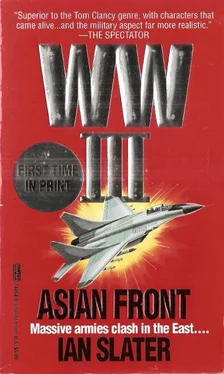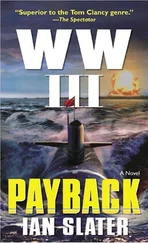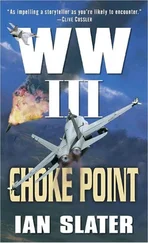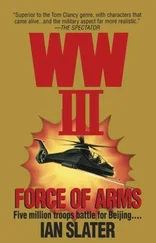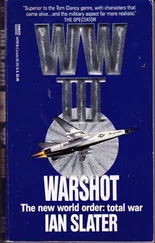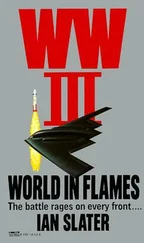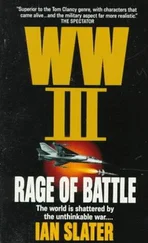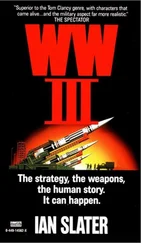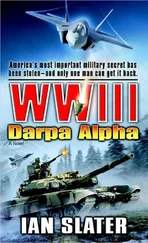The stony terrain being too risky for a landing at night, the Pave Low would hover as Brentwood, Salvini, Aussie Lewis, Choir Williams, and Jenghiz fast-roped down with their heavy packs. Aussie Lewis was putting on rubber gloves to prevent rope burn.
In preparation for the mission that would take them through the foothills and down to the pasture-rich plain before Ulan Bator, none of the men had been permitted to wash or shave for several days, and the air in the chopper was, as Aussie Lewis put it, “like a bloody parrot cage.” But better this than the smell of aftershave, which could cost them their lives. Jenghiz swore that a plainsman could smell foreigners a mile off. The cabin’s red glow gave way to an eerie green, and the Pave Low’s ramp opened, the rope uncoiling fast like a huge snake frantically descending into the abyss.
Jenghiz was the first to touch ground, and the dusty smell of cold wind and of a few spring bushes that had flowered high in the Hentiyn Nuruu, together with the rushing sound of water nearby, flooded him with a nostalgia that brought tears to his eyes.
“Right,” David Brentwood said as they all regrouped. “Jenghiz, lead the way.”
“Okay, roger,” Jenghiz said cheerfully. David had told him several times that the double affirmative wasn’t necessary, that either “okay” or “roger” would suffice, but Jenghiz would simply smile and still say, “Okay, roger.”
Praporshnik— or Warrant Officer — Petrov, in charge of the seven-man Spetsnaz commando team, checked his gear: an AKS-74 5 .45mm with noise suppressor, front pouch magazines, half a dozen RGD-5 grenades and five F-1 grenades, an RR-392 VHF transceiver, a “Dozhd” air mattress, ten-power B-N1 night binoculars, gas mask, canteen, map case, and 9mm Makarov pistol. Finally he checked his MR-1 throwing knife attached to his calf.
Next he turned to his radio operator, helping him to check his R-357 high-frequency burst transmission radio, AK-74, 9mm Makarov pistol, and RPG-22 antitank grenade launcher. The third man in the seven-man Spetsnaz commando team carried a 7.62 SVD sniper rifle along with 12cm-diameter contact-fused PMN antipersonnel mines. Like the other six members he also carried one of the MON-50 trip wire fragmentation mines that could destroy anything up to 150 feet away and which were now being collected in the middle of the squad.
The MON-50s would be used to “square off” the area where the transmitter had first indicated the American helicopter had stopped, either by hovering or landing to let off the four SAS/D commandos. Whether or not the American chopper had actually touched down, the Spetsnaz couldn’t be sure, only that the transmitter had indicated the zone exactly. It had all been easier to arrange than anybody at the Glavnoye Razvedyvatelnoye Upravleniye — GRU — or military intelligence quarters — had had any right to expect. The guide, Jenghiz, was well known in Khabarovsk for his knowledge of eastern Mongolia and so his relatives in Ulan Bator were just as easy to trace. He had been given a simple choice by the GRU: Take the cigarette-lighter-size transmitter they gave him, or “we’ll kill all your relatives.” Praporshnik Petrov joked how he wished he’d been given the same chance to be rid of his mother-in-law.
The Spets had been worried that because of the rugged, mountainous area north of the capital the transmitter would at times be “blinded” by the natural terrain. For a while this had happened, but then they’d been in luck and picked it up again.
The seven-man Spetsnaz squad’s orders were specific, for the guide Jenghiz did not know the purpose of the SAS mission, acting as guide only. The Spets had opted not to use their Hind A helicopter to overfly the SAS/D group, as this would only create a firefight, and the purpose of the SAS/D mission might the with the firefight between Spets and the SAS/D. GRU HQ had ordered Warrant Officer Petrov to take at least two of the SAS/D alive — if not all of them. Petrov, however, and the six men in his squad agreed that the only way you were going to take an SAS/D man alive was to get him in his sleep — overpower the guard and be onto him before he had a chance to know what was happening. For this too a chopper was ruled out — it could only be used at night, but even then only when the SAS/D team was far enough away not to hear its approach. The Spets were not worried about the SAS/D getting out, for when the American helo came back, in two or three days or whenever, it would set off the trip wire once it landed, the resultant fusillade of fragmentation pieces from the MON-50s’ explosions so deadly that the American helo would look like a sieve.
As the Spets chopper, carrying only two Spets, rose then banked to fly due north for ten miles toward the map reference that marked the SAS/D drop-off zone from which the transmitter was now moving and where the Spets would plant the mines, the other five Spets spread out following Petrov, whose radio operator was locked onto the transmitter signal. The SAS/D commandos would almost certainly stop to hide and rest just before dawn rather than risk being seen approaching the capital in daylight.
* * *
In this assumption the Spets were not to be disappointed, for by 5:30 a.m., when the first hint of dawn presented itself on the horizon, David Brentwood gave the order to wrap it up for the night and go to cover. They selected a spill of auto-size boulders scattered about the end of the escarpment. There were several caves nearby in the foothills, but the SAS/D avoided them. A cave was marvelous for making you feel safe, but if anything happened and you were discovered there was only one way out and this could easily be curtained off by enemy fire.
“Jenghiz and Aussie — first watch. Okay?”
“Roger okay,” Jenghiz said.
“Right,” Aussie answered, and positioned himself between two of the biggest boulders, whose shadow easily hid him from the view of anyone on the plain. He felt his right leg itching, almost uncontrollably. The horse-hide Mongol pants beneath the herdsman’s smock had been chafing his shin, and it took all his willpower not to scratch. If necessary he’d dump the horse-skin trousers and put on his SAS/D camouflage trousers for the journey back, but until they got there he’d have to put up with it.
He glanced back at the snow-mantled peaks of the Hentiyn Nuruu and men back south toward the pastureland plain before them that ran like a pale green apron down from the foothills toward the lonely capital of Ulan Bator now about forty miles away. A two-night march should get them to the capital of half a million. They’d been told by Colonel Norton at Freeman’s HQ that once in the capital they would be less likely to be stopped, for it would be nighttime and there would be Kazakhs, Khalkas, Chinese, and Russian Mongolians all mixing and caring only about their own interests.
At first it was thought by Norton that they would take Freeman’s message, his “preventive medicine,” to the Mongolian president at Government House in Sukhbaatar Square, a message that had been entrusted only to the four SAS/D men. But this was dropped in favor of approaching him in the more public, less defended pagoda temple now visited daily by the suddenly converted “Communist” president. Should one of them meet any misadventure the other three would have it, and each had been given the message in the majority Kazakh tongue. Jenghiz had not been told, as his job was merely to get them there and to translate if and when necessary. Again it wasn’t that anyone mistrusted him, but the SAS/D men had been following the old “need to know” rule.
David, Choir Williams, and Salvini were already out of it — dead to the world.
Читать дальше
